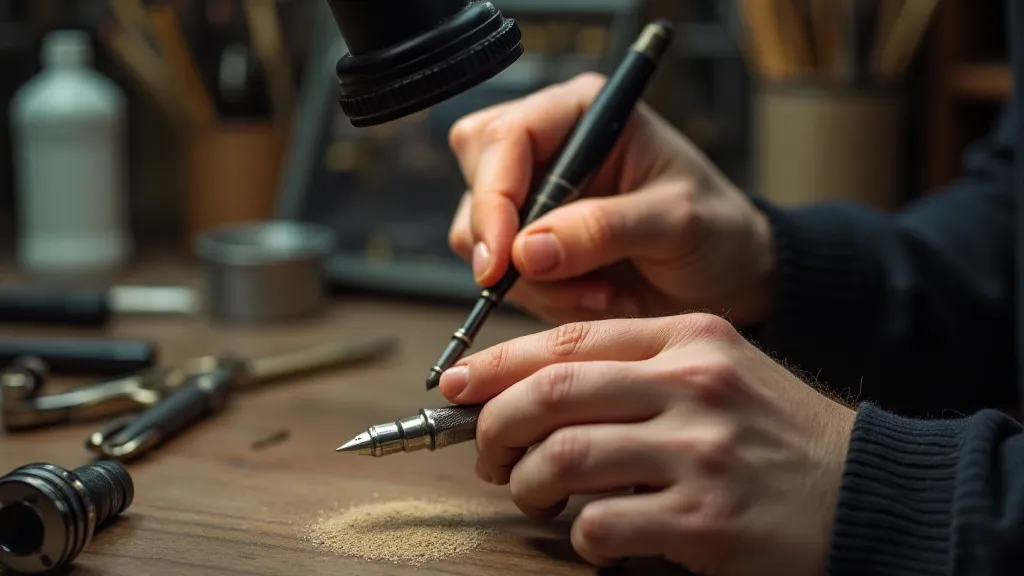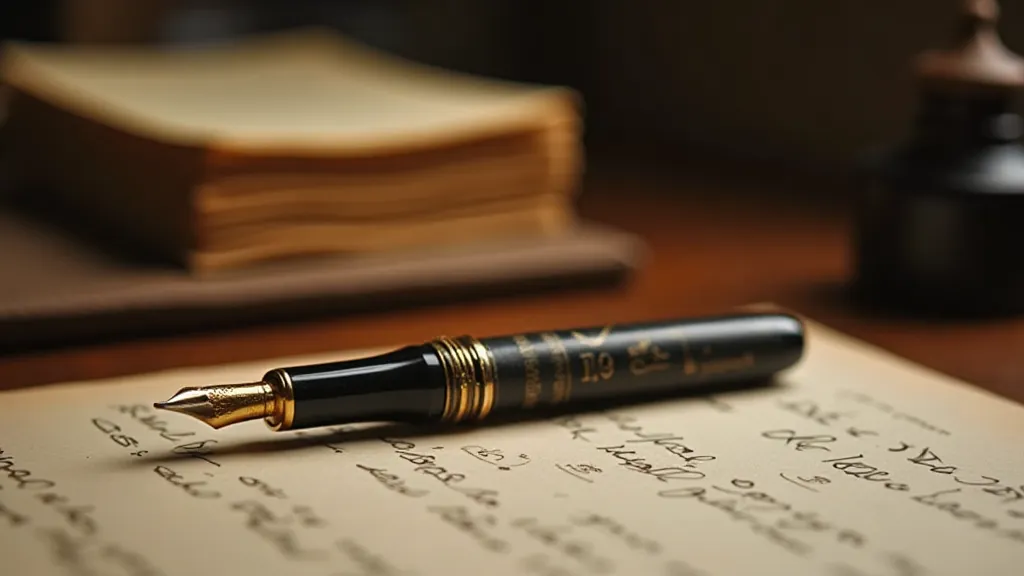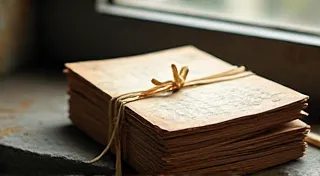Nib’s Lament: Fine-Tuning the Soul of a Restored Pen
There's a certain melancholy that clings to antique pens. They’re silent witnesses to countless letters written, declarations of love whispered onto paper, and perhaps, even the hurried scribbles of momentous decisions. Each scratch, each tiny imperfection, tells a story. Bringing one back from the brink of oblivion isn’t merely restoration; it’s a resurrection of a memory, a rekindling of a connection to a past where craftsmanship and deliberate beauty were paramount. And at the heart of that experience, lies the nib – the pen’s voice, its soul, and often, its most delicate challenge.
I recall finding my first antique pen at a dusty estate sale. It was a Conway Stewart, its black hard rubber dulled with age and neglect. The nib, bent and misaligned, produced nothing more than a ragged, unpleasant line. It felt almost mournful, as if the pen itself lamented its uselessness. I was a novice then, more inclined to admire the beauty than understand the mechanics. But something compelled me – a sense of responsibility to breathe life back into this forgotten instrument. That's when I began my journey into nib adjustment, a path that’s proven as rewarding as it is intricate.

The Anatomy of a Lament: Understanding Nib Issues
Before attempting any adjustment, it’s crucial to understand *why* a nib is behaving erratically. A bent nib isn't always the sole culprit. Several factors can contribute to poor writing performance. These include:
- Tines Misalignment: This is the most common issue. The tines (the two thin arms that split from the nib) need to be perfectly aligned to create a consistent ink flow and a clean line. Even a minuscule misalignment can cause “scratchiness” or inconsistent ink delivery.
- Nib Spread: Over time, the nib can “spread” – meaning the distance between the tines increases. This often leads to a broader, less controlled line and can exacerbate scratchiness.
- Nib Hook Damage: The "hook" is the curved portion at the very end of the nib. Damage to this area can significantly alter the nib’s writing characteristics.
- Feed Issues: The feed, the plastic or ebonite component beneath the nib, regulates ink flow. A clogged or damaged feed can mimic nib problems. Sometimes the issues appear to be with the nib, but the problem lies in the ink flow, and a deep clean might be more appropriate than a nib adjustment. Learning to diagnose these issues is key to successful restoration.
- Corrosion: Rust, though less common on gold nibs, can affect the surface and alter the nib’s responsiveness.
Diagnosing the specific problem is paramount. Sometimes, a simple cleaning with distilled water and a soft cloth will resolve minor issues. However, more complex problems necessitate more involved techniques. A full and proper restoration may require a multi-step process that involves several cleaning stages and even some gentle polishing. It is not uncommon to discover that the root cause of the problem isn't immediately obvious. Often, you’re dealing with a combination of issues, and tackling them in the right order is crucial for success.
The Tools of the Trade: A Gentle Hand is Key
Nib adjustment isn’t a brute-force endeavor. It requires patience, a steady hand, and the right tools. Here’s a basic toolkit:
- Magnifying Glass/Loupe: Essential for close inspection. A 5x or 10x magnification is ideal.
- Nib Straightening Tool: These are specially designed tools with curved tips that gently coax the nib back into shape. Many restorers start with a simple pin vice and needle.
- Micrometer: A precision instrument for measuring the tine spread. This allows for consistent adjustments.
- Soft Cloths: For cleaning and protecting the nib.
- Distilled Water: For cleaning.
- Patience: The most crucial tool of all.
Beginners often attempt to use pliers or other inappropriate tools. This almost invariably results in further damage. Remember, we're coaxing the nib back to its original shape, not forcing it. Careful attention to detail at this stage can mean the difference between a frustrating experience and a rewarding restoration.
The Art of the Adjustment: Step-by-Step Guidance
Let's assume we have a nib with slight tine misalignment. Here's a simplified approach (always err on the side of caution and make small, incremental adjustments):
- Assessment: Under magnification, carefully observe the tine alignment. Determine which direction the tines are misaligned.
- Gentle Pressure: Using a nib straightening tool (or a very fine needle in a pin vice), apply *very* gentle pressure to the offending tine. The goal isn’t to bend it dramatically, but to nudge it back towards alignment.
- Testing: After each adjustment, test the nib on paper. Observe the line quality. Is it smoother? Is the ink flow consistent?
- Tine Spread Adjustment: If the nib is "scratchy" or producing a very broad line, the tine spread might be excessive. This requires even more delicate adjustments. The micrometer allows for quantifying this change.
- Repeat and Refine: The process is iterative. Repeat the assessment, adjustment, and testing steps until the desired writing characteristics are achieved.
It’s a dance between observation and action, a constant refinement of touch and pressure. There’s a certain quiet satisfaction that comes from restoring a pen to its former glory. Sometimes, the problem isn’t just the tine alignment, but the overall condition of the feed. The feed plays a vital role in delivering a consistent flow of ink, and issues with it can mimic nib problems. Understanding how these components interact is crucial for successful restoration. For further reading on identifying and resolving common pen maladies, you might find valuable insights in "Ink's Apothecary: Addressing Common Pen Maladies & Their Remedies".

Beyond the Nib: Caring for the Pen as a Whole
Nib adjustment is just one aspect of pen restoration. A thorough restoration often involves cleaning the barrel, polishing the surface (with appropriate polishing compounds for the material), and ensuring the ink feed functions correctly. The materials used in antique pens – hard rubber, celluloid, early plastics – require specific care. Harsh chemicals can damage these materials, so gentleness and research are crucial. Preserving the original surface character is also paramount; often, a light polishing to remove superficial blemishes is preferable to an aggressive refinishing that removes the patina of age.
Understanding the history of a pen can also deepen the appreciation for the restoration process. Knowing that a particular Conway Stewart was popular in the 1930s, or that a Waterman was a favorite of diplomats, adds another layer of meaning to the work. Often, the inscriptions left by previous owners provide fascinating glimpses into the pen's past. Those mysterious markings, often faint and obscured by time, can be challenging to decipher, but unlocking their secrets can be incredibly rewarding. If you’re interested in learning more about deciphering inscriptions, you should check out "The Quill’s Whisper: Deciphering Inscriptions on Restored Pens".
The Silent Dialogue: Beauty and Imperfection
The appeal of antique pens isn’t solely about flawless performance; it's about embracing the stories etched into their surfaces. Scratches, imperfections, and faded finishes are all part of their history, testaments to their journeys through time. While restoration aims to improve functionality, it’s crucial to preserve the character and authenticity of the pen. A perfect restoration is rarely as desirable as one that retains the echoes of its past. Sometimes, the smallest amount of surface cleaning is all that’s needed. For inspiration on finding beauty in imperfection during pen restoration, read "The Silent Dialogue: Finding Beauty in Imperfection During Pen Restoration".
The Resonance of Restoration
Restoring antique pens isn’t simply a technical exercise; it's an act of preservation, a bridge between generations. It’s about recognizing the value of craftsmanship, the beauty of imperfection, and the stories held within these silent objects. Each nib, once lamenting its uselessness, now sings again – a testament to the power of patience, skill, and a deep respect for the past.
The best reward isn’t a flawlessly restored pen, but the knowledge that you’ve helped to keep a piece of history alive, one careful adjustment at a time.






